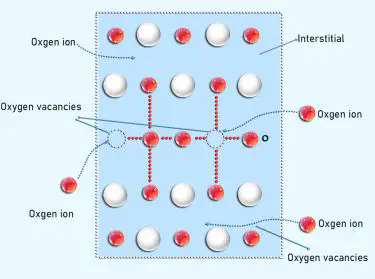Tuning crystal structure and electronic properties for enhanced oxygen intercalation pseudocapacitance in perovskite
 Image credit: Unsplash
Image credit: UnsplashAbstract
Oxygen intercalation supercapacitors with high specific capacitance and power density offer potential advantages in various applications. This study explores the potential of Ruddlesden-Popper (RP) perovskite materials for energy storage, focusing on oxygen intercalation pseudocapacitance properties. The RP structure significantly enhances oxygen intercalation pseudocapacitance by allowing interstitial oxygen intercalation, thereby overcoming limitations associated with oxygen vacancy concentration. Despite the weaker electronic conductivity and lower oxygen vacancy concentration observed in the RP structures, A-site deficiency effectively mitigates these drawbacks. La0.7Sr1.2Fe0.9Co0.1O4 (rp-d-LSFC) exhibits a higher concentration of free electrons, leading to improved conductivity and oxygen vacancy concentrations. Consequently, rp-d-LSFC exhibits an excellent specific capacitance of 983.6 F g−1 at 1 A g−1. Additionally, an asymmetric supercapacitor cell achieves an impressive energy density of 40.8 Wh kg−1 at a power density of 1,688.3 W kg−1. Density functional theory calculations further support the above results. This work advances our understanding of oxygen intercalation pseudocapacitance mechanisms.